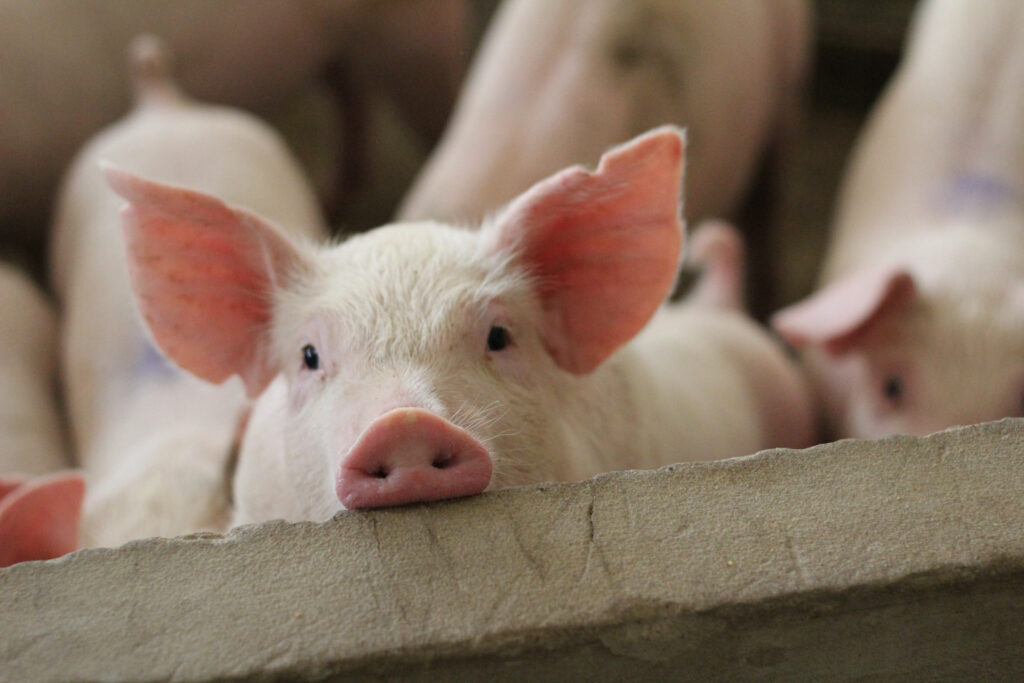UK pig industry reduces antibiotic use by 17%
24th June 2022
New figures reported by AHDB show the amount of antibiotic used to treat pigs on UK farms in 2021 fell by 17%, bringing the total reduction since 2015 to 69%.

According to data collected using the electronic medicine book (eMB), which represent approximately 95% of pigs slaughtered in the UK, antibiotic use in 2021 stood at 87mg/PCU, compared with 105mg/PCU in 2020.
This result is a positive step towards meeting the second set of targets developed by the RUMA Targets Task Force, of a 30% reduction in total antibiotic use by the end of 2024, based on data from 2020.
Grace Webster, vet and chair of the Pig Health & Welfare Council Antimicrobial Use Subgroup, commented: “This is another strong reduction in the use of antibiotics in the UK pig herd during what has been a very difficult year for pig producers. It reflects a positive attitude and hard work by our vets and farmers to ensure that good antibiotic stewardship is applied on our pig farms.”
Use of the highest priority critically important antibiotics (HP-CIA) remains at a very low level, with a slight decrease from 0.05mg/PCU to 0.03mg/PCU recorded in 2021. No Colistin use was reported in pigs in 2021.
HP-CIAs, as categorised by the European Medicines Agency (EMA), are the most important for human medical health and reductions in their use has been a focus for all UK farm animal sectors since stewardship efforts have stepped up.
The only class of antibiotic in which a reduction was not recorded is the aminoglycosides. Usage increased slightly, at 8.06mg/PCU in 2021, up from 7.89mg/PCU in 2020, continuing the trend noticed in the 2020 data.
Ms Webster added: “There are undoubtedly challenges to be addressed as the industry continues to adapt to the loss of zinc oxide to control post-weaning diarrhoea, and this is reflected in a small increase in use of aminoglycosides, but we are reassured by a further reduction in the use of the highest priority critically important antibiotics.”
AHDB sector council chair, Mike Sheldon, commended the hard work of the industry: “For UK pig producers and their vets to have achieved this substantial reduction in the use of antimicrobials would have been an admirable achievement in any year. To achieve it in this last year, with all the well-known and daunting problems besetting farmers, is, frankly, incredible.”
AHDB head of animal health & welfare, Dr Mandy Nevel also praised the pig industry for their efforts: “The last year has been extremely challenging for the pig sector and this reduction in antibiotic use is good news. We know that stockpersonship has a big impact on disease levels and the fact that the industry has not turned to antibiotics as a fallback during this period is a reflection on the importance with which this issue is held by the sector and the high standards we have.”
Data are submitted to the eMB, supported by a Red Tractor and QMS requirement for quarterly submission, before being analysed by AHDB and shared with the Pig Veterinary Society (PVS), National Pig Association, Pig Health and Welfare Council, RUMA, Veterinary Medicines Directorate (VMD) and other stakeholders to generate a holistic view of antibiotic use in its sector. The data allow industry to look at the more nuanced variations in individual antibiotic use to identify potential optimisations.
Commenting on the news, Jim Morris, senior vice president of PVS, said: “The Pig Veterinary Society welcomes the latest figures showing a 17% year-on-year reduction in the use of antimicrobials by the UK pig sector. This reflects a lot of hard work by British pig farmers and their vets and reflects their commitment to the responsible use of antibiotics. The fall in the use of highest priority critically important antibiotics is particularly welcomed.”
